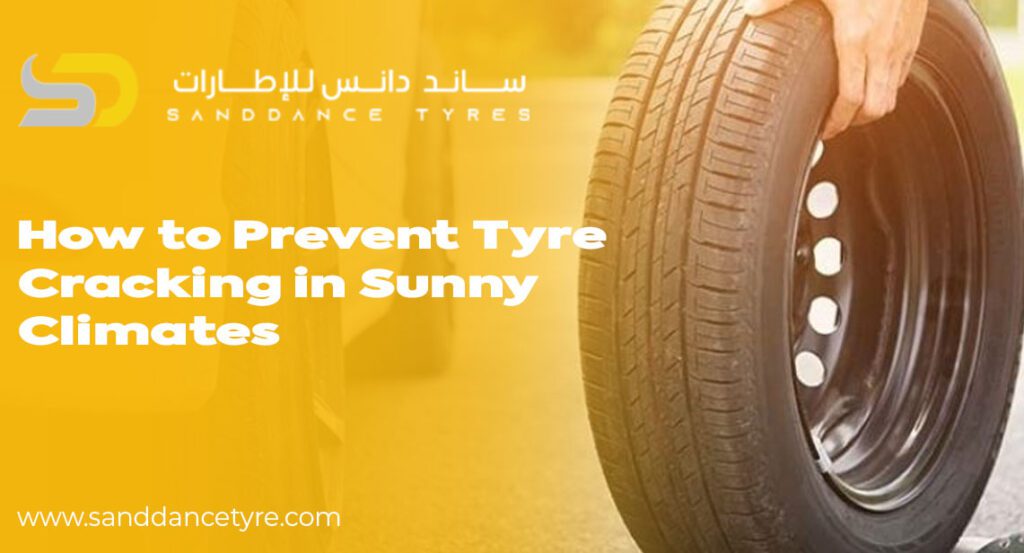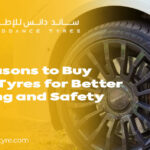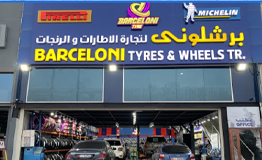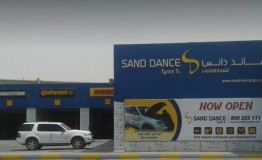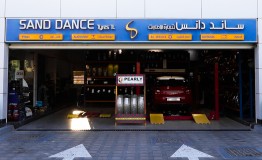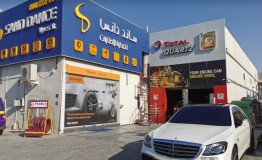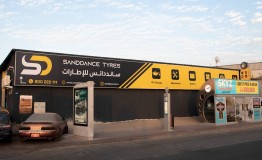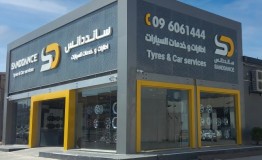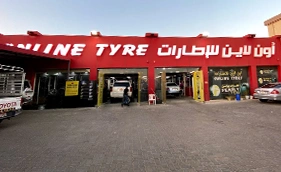Tyre wear-out is a large issue in hot and sunny climates, which we see in the UAE. It weakens the structure of tyres, which in turn puts them at a greater risk of blowouts and failure. The intense sun, UV exposure, and very high road temperatures play a great role in rubber breakdown. That is why vehicle owners in the region need to know how to prevent tyre wear out. With proper care and a routine of maintenance practices, tyre life can be extended, which in turn saves drivers on expensive replacements and issues related to safety.
Why Tyre Cracking Happens in Hot Weather?
In hot climates, tires are put to great environmental stress. Continuous UV exposure degrades the rubber components; at the same time, the high road surface temperature causes thermal expansion and contraction. Over time, what we see is the development of fine surface cracks, which in turn deepen. Heat aging also plays a role in this process, which in turn makes tires brittle and more prone to failure. In the UAE’s case, which has high humidity and UV index, we see that tires are at a greater risk of damage if not properly maintained.
The Impact of UV Rays on Tyres
UV is the main cause of tyre cracking. Prolonged sun exposure to which tires are exposed puts out the rubber’s molecular structure. This, in turn, causes the tyre surface to lose flexibility and to develop cracks. In sunny areas, UV tyre protection is very important. Use of protectants that have UV inhibitors and parking in the shade greatly reduces rubber degradation from sun exposure.
How Heat Aging Affects Tyres?
Heat-aged tires are a term we use for when tires are exposed to high temperatures constantly, which in turn breaks down the inner structure of the tire. Also, unlike cold, which slows chemical processes, heat does the opposite and speeds them up. This, in turn, quickens the oxidation process within the rubber, which causes it to harden and crack. In the UAE’s case, their extreme heat, which is at its peak during summer, causes tires to age faster than normal. Regular inspections and proper storage conditions are what you can do to mitigate the effects of heat aging on your tires.
Importance of Maintaining Correct Tyre Pressure
Maintaining proper air pressure in your tires is very important for the prevention of tire cracking. When tires are under-inflated, they flex more during the drive, which in turn causes more heat to be produced, and that brings on wear and more stress to the rubber. Also, if the tires are over-inflated, they become too rigid, and we see an increase in crack activity at the side walls. For that reason, it is best to do regular pressure checks, especially in the morning when the tires are cool, which in turn will even out the pressure and reduce the chance of premature cracking.
Best Practices for Tyre Care in Sunny Regions
Good tire care is key to preventing cracking. Begin by checking tires weekly for the first signs of wear or very fine cracks. Clean them with mild soap and water, and stay away from harsh chemicals that remove protective oils. After cleaning, do put on a rubber safe conditioner to restore flexibility. Also, get tires rotated, balanced, and aligned every 8,000 to 10,000 km, which in turn will promote even wear. By following these tips, you contribute to having longer-lasting, safer tires in hot weather.
How Driving Habits Affect Tyre Cracking?
The way you drive impacts your tires more than you think. Aggressive driving, which includes rapid acceleration, sharp turns, and hard braking, puts extra stress on the tires. This causes uneven wear of the tread and an increased chance of the tire cracking under pressure. By avoiding potholes, slowing down over speed breaks, and not overloading your vehicle, you can see a large-scale improvement in tire wear. Also, safe driving is better for your car, which in turn also plays a role in reducing rubber degradation.
Storage Tips to Avoid Tyre Damage
Even out-of-use tyres will crack if proper storage procedures aren’t followed. Tyres put outside or in contact with heat elements are at risk from the sun, ozone, and moisture. It is best to keep tyres in a cool, dry area inside when not in use, also stand them up straight on a clean base. Use covers or dark bags to screen out UV light, and also avoid piling them on top of each other, which will cause shape issues. If you are storing your summer or winter tyres for the season, make sure to clean and dry them off fully before you wrap them up.
The Role of Tyre Conditioners and UV Protectants
Tyre care products play an important role in rubber protection against cracking. We have products that put back the oil that is lost because of heat and sun. UV protectants we put a barrier on the tyre, which reflects harmful rays and in turn slows down rubber aging. It is very important to use water-based products that are free of petroleum solvents for best results; some products may do more harm than good. When used as a routine, these treatments will improve flexibility and also extend tyre life.
When to Replace Cracked Tyres?
Not all cracks are a sign that you will need a replacement right away, but large or wide cracks are a warning. If you see cracks that have formed in the tread or the sidewalls, report them to a tyre professional to assess the issue. By ignoring very serious cracks, you put yourself at risk of a blowout or poor safety while driving. In the UAE, we recommend going for a tire change out of the blue every 4 to 5 years, which is beyond the tread looking fine because of the high degree of heat-related aging.
Bottom Line
Tyre wear in the sun, as an issue which is very much present for drivers in places like the UAE, is a real and urgent matter. From UV tyre protection to regular pressure checks and careful driving, each little step counts in the care of your tyres. The extreme heat and sun are out of our control, but their effect on your tyres is what we have the power to manage with the right approaches. At Sanddance Tyres, we offer expert advice, high-quality tyres, and professional maintenance services to help you drive safely and confidently, no matter how hot it is.
Read More: Are Directional Tyres Better for the UAE Rainy Season?
Frequently Asked Questions
What causes tire cracking in hot weather?
In what we see as the main cause of tyre cracking in hot climates is that which results from the long-term action of the ultraviolet (UV) rays from the sun. Outdoors in very hot weather, the UV rays break down the rubber in the tires, which in turn causes them to become brittle and more prone to cracking. In the UAE, for example, we see that the combined effect of the UV exposure and the extreme heat, which we have there, this process is greatly accelerated.
Can the wear on the tyre be fixed?
Tyre cracking is a permanent issue. Once you see it in the rubber, it’s permanent. That said, the process may be slowed and managed via regular care, proper storage, and the use of UV tyre protection products. Should the cracks be deep into the rubber or affect the sidewall and tread, it is best to replace the tyre.
How often do I check my tires for cracks?
In warm weather, you should check your tires monthly. In the height of summer, do it even more often. Look for thinning, surface dryness, or sidewall damage, which are early signs of cracking. Regular checks will help you to spot issues before they turn into safety issues.
In what way do tire protectants work in sunny weather?
Yes, tyre protectants do what they are supposed to do when used as they are meant to be and consistently. They put out a protection layer, which in turn reduces UV damage and which also keeps rubber flexible. Also, out of choice, go for water-based protectants which do not have petroleum in them; petroleum-based products, in fact, speed up rubber breakdown.
Is it safe to have tires with cracks?
While some surface cracks may be of no immediate concern, they do in fact point out that the tyre is in the process of aging and may soon lose its integrity. If the cracks are deep or present in many areas, especially the sidewall, it is best to replace the tyre to avoid an accident. Also very much a part of the picture is the regular check-up to determine if the tyre is still roadworthy.


